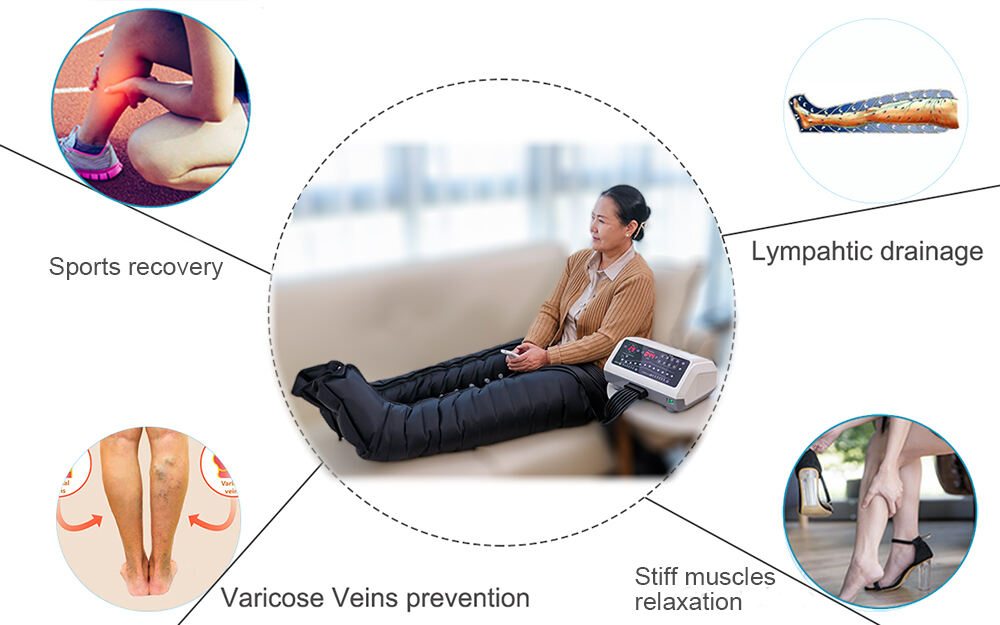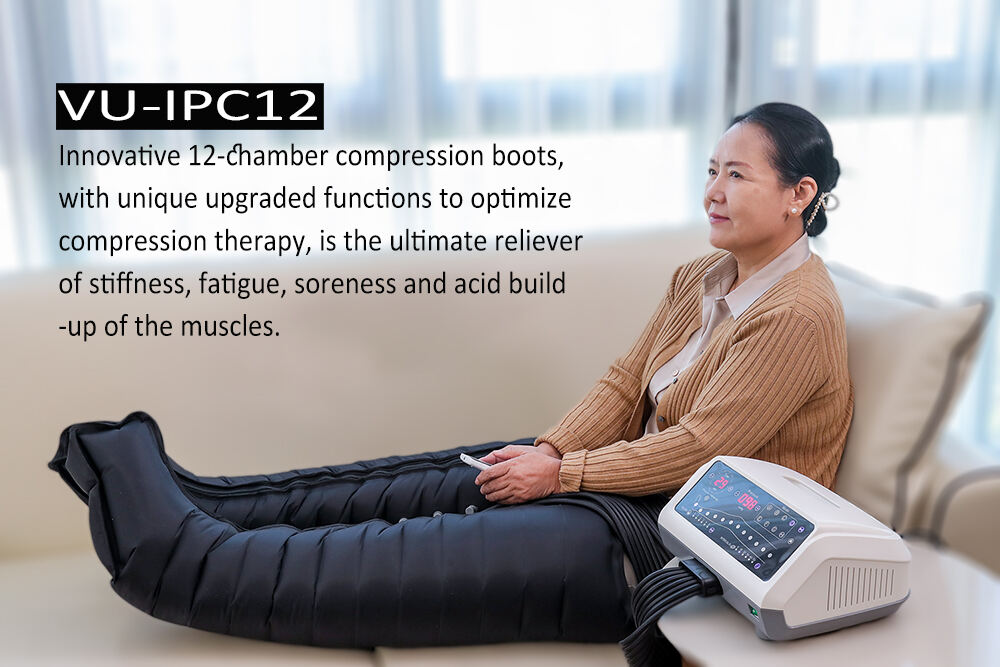Understanding the Science Behind Post-Workout Muscle Recovery
After an intense workout session, your leg muscles need proper care and attention to recover effectively. The growing popularity of leg massagers has revolutionized how athletes and fitness enthusiasts approach their post-workout recovery routine. These innovative devices work by applying targeted pressure and rhythmic movements to help alleviate muscle tension and promote faster healing.
When you engage in strenuous exercise, your leg muscles experience microscopic tears and accumulation of lactic acid. This natural process leads to that familiar sensation of soreness and stiffness. A leg massager addresses these issues by improving blood circulation, reducing inflammation, and helping to flush out metabolic waste products that build up during exercise.
Benefits of Using a Leg Massager for Athletic Recovery
Enhanced Blood Circulation and Oxygen Flow
One of the primary advantages of using a leg massager is its ability to boost blood circulation throughout your lower body. The rhythmic compression and release actions help push blood through your vessels more efficiently, delivering essential oxygen and nutrients to tired muscles. This improved circulation can significantly speed up the recovery process and reduce post-workout soreness.
The enhanced blood flow also helps remove metabolic waste products that accumulate during exercise. When you use a leg massager regularly after workouts, you may notice reduced muscle fatigue and quicker recovery times between training sessions.
Reduced Muscle Tension and Soreness
The targeted pressure applied by a leg massager helps break down muscle knots and release tension that builds up during intense workouts. This mechanical manipulation of muscle tissue can be particularly effective in addressing delayed onset muscle soreness (DOMS), which typically peaks 24-48 hours after exercise.
Regular use of a leg massager can help maintain muscle flexibility and prevent the formation of adhesions in the connective tissue. This results in better range of motion and reduced risk of injury during future workout sessions.

Different Types of Leg Massage Techniques
Compression Therapy Technology
Modern leg massagers often incorporate compression therapy, which uses air pressure to squeeze and release different areas of your legs in a sequential pattern. This technology mimics the natural pumping action of your muscles during exercise, helping to improve lymphatic drainage and reduce swelling.
The intensity levels can usually be adjusted to match your comfort and recovery needs, making it suitable for both beginners and advanced athletes. Some advanced leg massagers even offer customizable compression patterns to target specific areas of concern.
Percussion and Vibration Methods
Some leg massagers utilize percussion or vibration technology to deliver deep tissue massage effects. These rapid-fire movements can penetrate deep into muscle tissue, helping to break up knots and adhesions while promoting blood flow to the area.
The combination of different massage techniques in one device allows for a more comprehensive recovery approach. Users can switch between modes depending on their specific needs and the type of workout they've completed.
Optimal Timing and Duration for Leg Massage Sessions
Post-Workout Recovery Protocol
The timing of your leg massage session can significantly impact its effectiveness. For optimal results, experts recommend using a leg massager within 30 minutes to two hours after completing your workout. This window allows you to address muscle fatigue before significant soreness sets in.
Start with shorter sessions of 10-15 minutes and gradually increase the duration as your body adapts. Pay attention to how your muscles respond and adjust the intensity and duration accordingly. Consistency is key – regular use will yield better results than sporadic, lengthy sessions.
Long-Term Recovery Benefits
Incorporating leg massager sessions into your regular recovery routine can lead to cumulative benefits over time. Athletes who consistently use these devices often report improved flexibility, reduced recovery time between workouts, and better overall muscle maintenance.
For best results, consider using your leg massager not only after workouts but also on rest days to maintain muscle health and prevent stiffness. This proactive approach to recovery can help you maintain a more consistent training schedule.
Maximizing the Effectiveness of Your Leg Massager
Proper Positioning and Setup
To get the most benefit from your leg massager, proper positioning is crucial. Find a comfortable position where you can fully relax, preferably with your legs elevated slightly above your heart. This position helps optimize blood flow and lymphatic drainage during the massage session.
Ensure the massage attachments or compression sleeves are properly secured and aligned with your muscle groups. Many users find it helpful to use their leg massager while watching TV or reading, making it an easy addition to their evening routine.
Complementary Recovery Practices
While a leg massager is highly effective on its own, combining it with other recovery methods can enhance its benefits. Consider incorporating proper hydration, adequate protein intake, and gentle stretching exercises alongside your massage sessions.
Some athletes also find it beneficial to use their leg massager in conjunction with hot or cold therapy, depending on their specific recovery needs. This comprehensive approach to recovery can lead to better overall results and improved athletic performance.
Frequently Asked Questions
How Often Should I Use a Leg Massager?
For optimal results, use your leg massager 3-4 times per week, especially after intense workouts. Each session can last 15-30 minutes, depending on your needs and comfort level. Listen to your body and adjust the frequency accordingly.
Can I Use a Leg Massager Before Working Out?
While leg massagers are primarily designed for post-workout recovery, a gentle massage session before exercise can help warm up muscles and improve flexibility. Keep pre-workout sessions brief and use lower intensity settings.
What Features Should I Look for in a Leg Massager?
Look for adjustable intensity levels, multiple massage modes, easy-to-use controls, and comfortable materials. Consider whether you prefer compression therapy, percussion massage, or a combination of both. Battery life and portability might also be important factors depending on your lifestyle.

